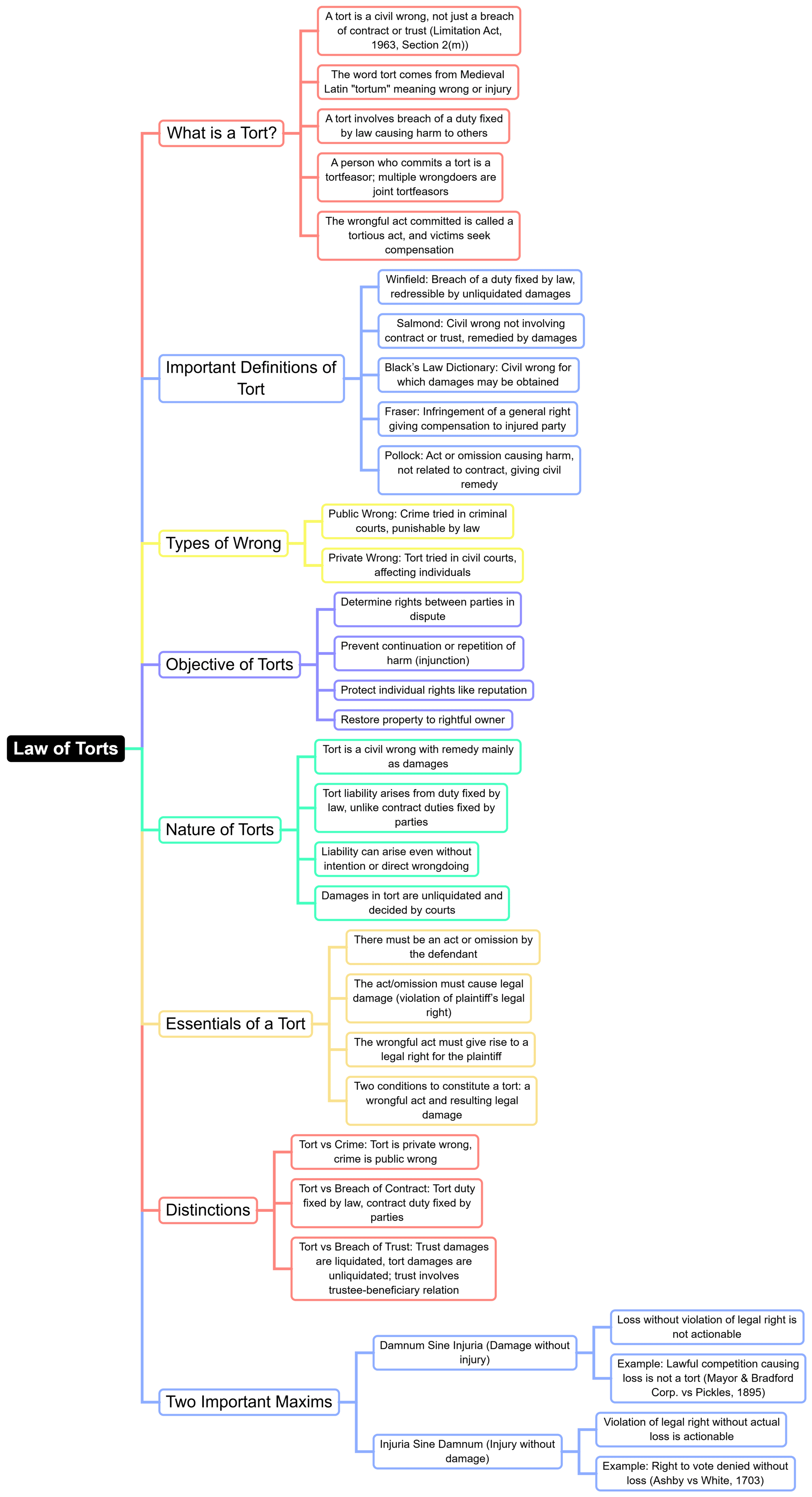CLAT Exam > CLAT Notes > Legal Reasoning for CLAT > Mind Map: Law of Torts
Mind Map: Law of Torts | Legal Reasoning for CLAT PDF Download

The document Mind Map: Law of Torts | Legal Reasoning for CLAT is a part of the CLAT Course Legal Reasoning for CLAT.
All you need of CLAT at this link: CLAT
|
63 videos|172 docs|37 tests
|
FAQs on Mind Map: Law of Torts - Legal Reasoning for CLAT
| 1. What is the Law of Torts and its significance in CLAT? |  |
Ans. The Law of Torts is a branch of law that deals with civil wrongs and provides remedies to individuals who have suffered harm due to the wrongful acts of others. In the context of CLAT, understanding the Law of Torts is essential as it forms a crucial part of the legal curriculum and helps in developing analytical skills necessary for legal reasoning.
| 2. What are the main types of torts recognized under the Law of Torts? |  |
Ans. The main types of torts include intentional torts, negligence, and strict liability. Intentional torts involve deliberate actions causing harm, negligence refers to a failure to exercise reasonable care resulting in damage, and strict liability holds a party responsible for damages regardless of fault or intent.
| 3. How does negligence differ from other types of torts? |  |
Ans. Negligence is characterized by a breach of duty that results in harm to another person, primarily due to a lack of reasonable care. Unlike intentional torts, where the harm is deliberately inflicted, negligence focuses on the failure to act responsibly, which can lead to unintentional harm.
| 4. What is the role of 'damages' in tort law? |  |
Ans. Damages in tort law refer to the monetary compensation awarded to a victim for losses suffered due to a tortious act. The purpose of damages is to restore the injured party to their pre-injury financial position and to deter the wrongdoer from committing similar acts in the future.
| 5. How can the Law of Torts impact daily life and business practices? |  |
Ans. The Law of Torts has a significant impact on daily life and business practices as it establishes standards of behavior to prevent harm. Businesses must ensure safety and compliance with regulations to avoid liability for negligence, while individuals should be aware of their rights and duties to avoid potential tort claims.
Related Searches
















